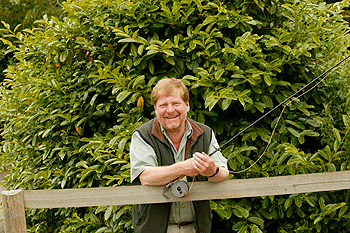Gamekeeper

Having just put out the last few grains of last year?s wheat, and started on the new supply, I can vouch for what most keepers are saying. The new stuff looks to be a pretty poor sample. The grains are pinched compared with the nice fat ones from last year.
With this in mind, lots of people seem to be worried about whether they will be able to hold their birds well. Does this poorer wheat sample mean that your birds are more likely to stray in search of better stuff? Well, I must admit that I am pretty laid back on this one. As I see it, provided my sample of wheat is clean and palatable, everyone else is in the same boat, so any wandering birds will only find the same stuff on offer at the neighbour?s.
I thought that Alan Beynon?s article, Mind out for mould (Shooting Times, 3 October) was particularly good in flagging up what we really need to be aware of. As he so rightly says, our big risk this year is from wheat that was on the damp side at harvest, as this inevitably leads to mould. I also agree with him that a smell and taste test is a good idea. If you are happy to chew and swallow a few grains, your pheasants should be, too, but if they taste mouldy? Apart from the serious risk of health issues due to the toxins which these moulds might produce, mouldy grain is less palatable to birds. This means birds will eat less, but they will need to make up the deficit, and the likeliest way they will do this is by searching for pastures new.
Bushel weights and protein
Alan?s knowledge of bushel weights is far superior to mine, but I am sure he is right to insist on nothing lower than 65. I also note that he says that average protein levels are a bit higher this year than last, so we do not need to worry on that account. I assume that this is actually a reflection of the fact that thinner grains contain a bit less starch.
Every year I get a call from someone who says that they want to force the keeper to feed the skinny grains or tailings that come from the cleaning process. As well as being cheaper, they say, these are higher protein and must therefore be more nutritious than the good stuff. Well, no actually; these thin grains lack starch and therefore calories, and birds need energy as well as protein if they are to do you proud.
Much is often made of adding spice to the grain that you feed, but I confess I don?t bother. Thirty years ago as a raw recruit to the Game & Wildlife Conservation Trust, I was given the task of doing a preference test between wheat dressed with commercially available additives, simple aniseed, and plain wheat with just a little corn oil to match the oil quantity in the other additives.
This was carried out with overwintered pheasants on the rearing field ? all four feeds were taken equally. This is not the same test as feeding to birds in the wild, just the best that one can do in controlled conditions. However, it does accord with the fact that pheasants, and indeed other birds, have very little sense of smell with which to detect the spice.
On the other hand, we know jolly well that wheat alone is not a complete diet for an adult pheasant in winter. Given this, it is the birds? natural instinct to try to make up deficiencies, and I guess that most of us hope that their free-range existence allows them to do that with natural foods. This probably works fine on smaller shoots, but the more birds there are the wider the natural foods have to be shared, and perhaps the greater the straying risk if they are in short supply.
The value of multi-seed mixes
In this regard I wonder about the likely value of multi-seed ground mixtures. There is no real science that I am aware of to back this up, but many keepers swear by these feed supplements, and common sense suggests they could be right. Each different species of seed will have its own unique spectrum of nutrients, and it seems quite likely that what is short in wheat could well be present in the likes of maize, sunflower, millet and pulses. So, scattering a bit of ground mix, perhaps mixed with wheat, can hardly do any harm and may well make a difference.
Another approach to offering this sort of variety that I very much favour is to grow a bit of wild bird mix in place of some of your conventional covercrops. An odd strip within a block of maize or sorghum, for example, would add diversity to the habitat as well as offering a feed supplement. It would also enhance the value of your covercrops for other farmland birds, thus helping to improve the general conservation value of your shoot.








